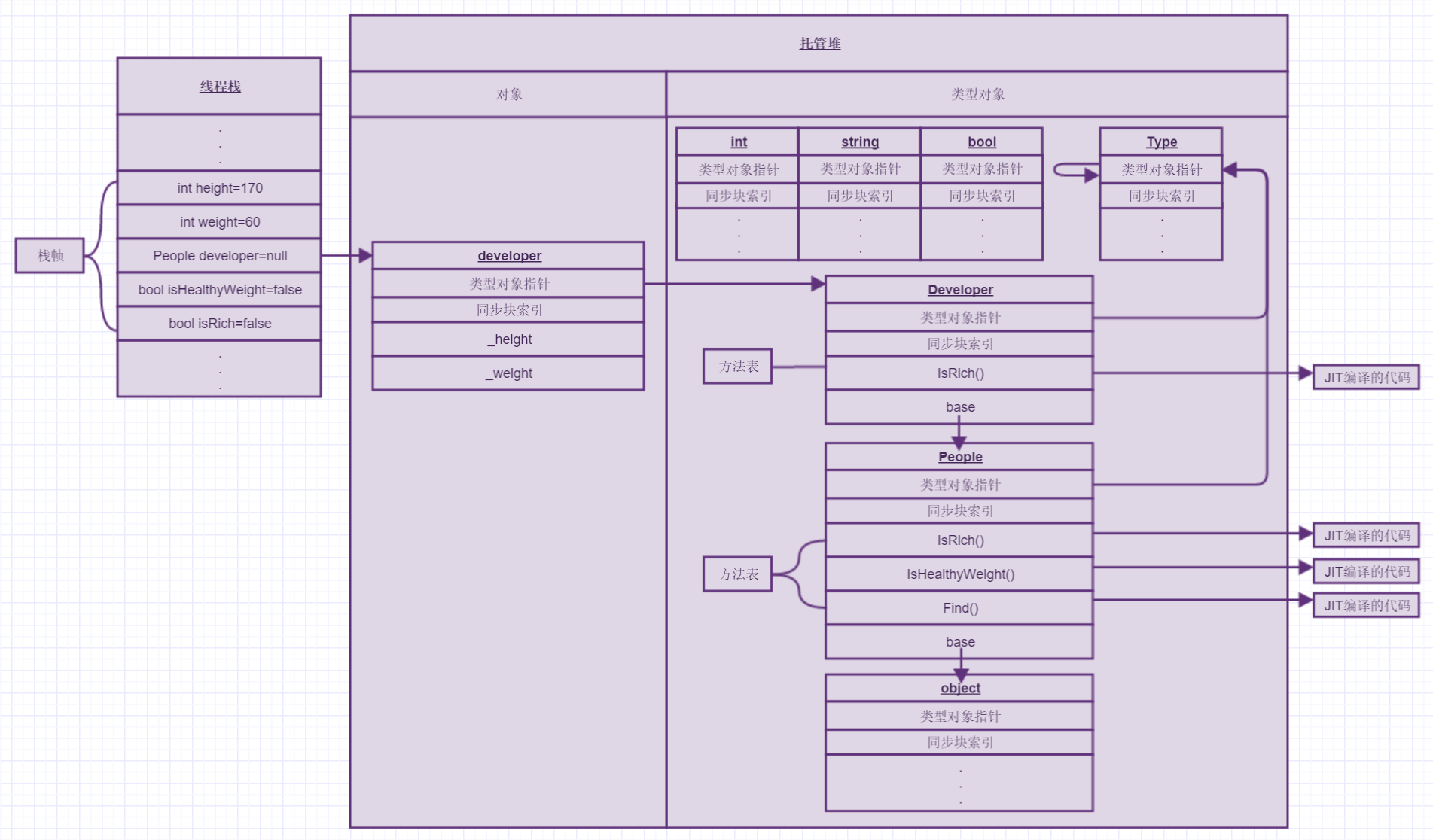你的C#代码是怎么跑起来的(2)
作者:网络转载 发布时间:[ 2016/5/31 10:04:16 ] 推荐标签:测试开发技术 C#
看个简单的例子,只用于演示,不考虑合理性:
1 using System;
2
3 namespace Test
4 {
5 class Program
6 {
7 static void Main(string[] args)
8 {
9 int height = 170;
10 int weight = 60;
11 People.Find();
12 People developer = new Developer()(height, weight);
13 bool isHealthyWeight = developer.IsHealthyWeight();
14 bool isRich = developer.IsRich();
15 }
16 }
17
18 class People
19 {
20 int _height;
21 int _weight;
22
23 public People(int height, int weight)
24 {
25 _height = height;
26 _weight = weight;
27 }
28
29 public virtual bool IsRich();
30
31 public bool IsHealthyWeight()
32 {
33 var healthyWeight = (Height - 80) * 0.7;
34 return Weight <= healthyWeight * 1.1 && Weight >= healthyWeight * 0.9;
35 }
36
37 public static string Find(string id) { return ""; }
38 }
39
40 class Developer : People
41 {
42 public Developer(int height, int weight) : base(height, weight)
43 { }
44
45 public override bool IsRich()
46 {
47 return false;
48 }
49 }
50
51 }

首先判断类型是否都加载,用到了int,bool,string,这些是在mscorlib.dll程序集的system命名空间下,所以先加载mscorlib.dll程序集,再把int,bool,string加到类型对象里。另外还有我们自己定义的Developer和People,也把类型对象创建好,另外也别忘了基类object,也要加载进来。(实际上还有double啊,这里没画了)另外继承类的类型对象里面都有个字段指向基类,所以才能往上执行到基类方法表里的方法。
局部变量都在线程栈上,Find()方法是静态方法,直接去People类型对象的方法表里去找,找到后看是否有存根标识,没有的话做JIT编译,有的话直接运行。
developer的实例化虽然是用People定义的,但实例还是Developer,所以developer的类型对象指针指向Developer,对象里除了类型对象指针还有实例字段,包括基类的。内存分配在托管堆上,并把地址给到线程栈上的变量中。
虚函数也一样,在运行时已经确定是Developer,所以会调用Developer方法表里的IsRich方法,一样先JIT,再运行。
以上是一个简单的C#程序的运行过程和在内存上的表现,本篇主要内容来自CLR via C#这本书,小弟算是总结一下,谢谢观看。
相关推荐

更新发布
功能测试和接口测试的区别
2023/3/23 14:23:39如何写好测试用例文档
2023/3/22 16:17:39常用的选择回归测试的方式有哪些?
2022/6/14 16:14:27测试流程中需要重点把关几个过程?
2021/10/18 15:37:44性能测试的七种方法
2021/9/17 15:19:29全链路压测优化思路
2021/9/14 15:42:25性能测试流程浅谈
2021/5/28 17:25:47常见的APP性能测试指标
2021/5/8 17:01:11













 sales@spasvo.com
sales@spasvo.com